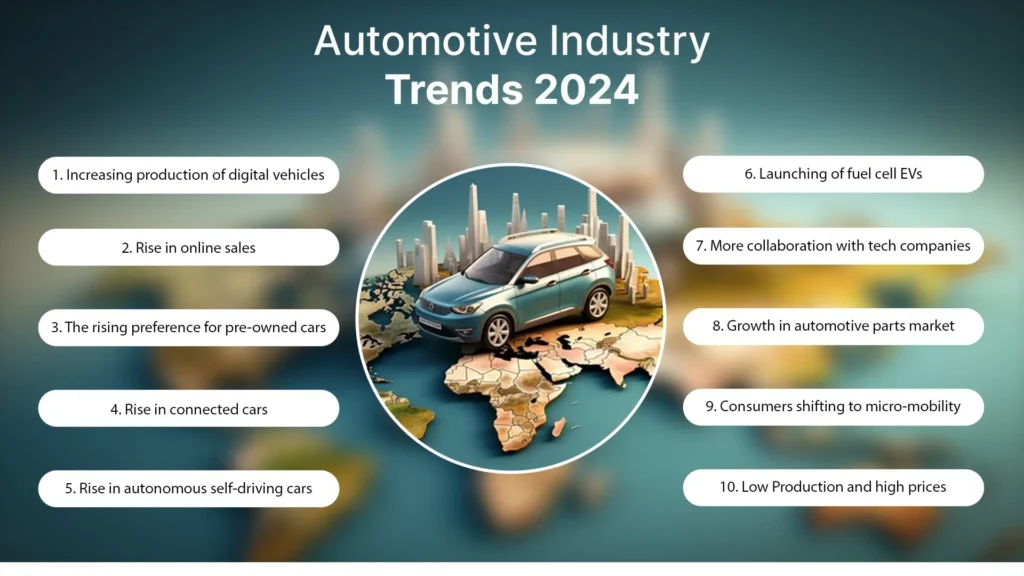The automobile industry is undergoing a transformative phase, driven by globalization, technological advancements, and shifting consumer preferences. Among the key elements shaping this evolution is the burgeoning sector of automobile exports. As countries increasingly rely on international markets to boost their economies, automobile exports have emerged as a significant contributor. This article explores the current trends, challenges, and opportunities in the automobile export sector.
Current Trends in Automobile Exports
Increasing Global Demand
The demand for automobiles continues to rise globally, particularly in developing markets such as India, Southeast Asia, and Africa. According to the International Organization of Motor Vehicle Manufacturers (OICA), global vehicle production reached approximately 77 million units in 2022, highlighting the increasing appetite for vehicles worldwide. Emerging economies are experiencing a rapid increase in disposable income, leading to higher vehicle ownership rates and, consequently, greater demand for exported automobiles.
Electrification and Sustainable Mobility
With the global push towards sustainability and reducing carbon emissions, there has been a marked increase in the export of electric vehicles (EVs). Countries are investing in EV production to meet both domestic and international demand. For instance, China has emerged as a leader in the EV market, with its exports of electric cars skyrocketing in recent years. This trend signifies a shift towards greener technologies and presents an opportunity for countries to position themselves as leaders in the future automotive landscape.
Strategic Partnerships and Collaborations
To enhance their competitiveness in the global market, many automobile manufacturers are forming strategic partnerships and collaborations. These alliances often involve technology sharing, joint ventures, and co-development projects. For instance, traditional automakers are collaborating with tech companies to develop autonomous vehicles and advanced driver-assistance systems (ADAS). Such collaborations not only bolster innovation but also facilitate access to new markets, increasing the potential for exports.
Challenges in the Automobile Export Sector
Regulatory Hurdles
One of the significant challenges faced by automobile exporters is navigating complex regulatory frameworks across different countries. Each nation has its own set of standards and regulations concerning vehicle safety, emissions, and manufacturing practices. Compliance with these varying regulations can be cumbersome and costly for manufacturers, often leading to delays in the export process. Additionally, trade policies and tariffs imposed by countries can further complicate export activities, making it essential for exporters to stay updated on international trade laws.
Supply Chain Disruptions
The COVID-19 pandemic exposed vulnerabilities in global supply chains, impacting the automobile export sector significantly. Delays in the production of key components, such as semiconductors, have affected vehicle production timelines and availability. As manufacturers strive to recover, they must rethink and restructure their supply chains to build resilience against future disruptions. This may involve diversifying suppliers and investing in localized production to reduce dependency on global supply networks.
Intense Competition
The global automobile export market is fiercely competitive, with numerous players vying for market share. Traditional automotive powerhouses like Japan, Germany, and the United States face increasing competition from emerging markets, particularly in Asia. Countries like South Korea and India are ramping up their automobile manufacturing capabilities, leading to a more competitive landscape. To thrive in this environment, manufacturers must innovate and adapt quickly to changing market conditions while ensuring quality and cost-effectiveness.
Opportunities in the Automobile Export Market
Emerging Markets
As mentioned earlier, emerging markets present a significant opportunity for automobile exports. Countries in Asia, Africa, and Latin America are witnessing rapid urbanization and an expanding middle class, driving the demand for automobiles. For instance, the African market is expected to grow substantially over the next decade, driven by rising incomes and urbanization. Manufacturers that strategically position themselves to tap into these markets can reap significant rewards.
Digital Transformation
The rise of digital technologies is transforming the way automobile companies operate, from production to sales and marketing. E-commerce platforms and digital marketing strategies are becoming essential for reaching potential customers in new markets. Manufacturers that embrace digital transformation can enhance their global reach, streamline operations, and provide better customer experiences, ultimately leading to increased exports.
Focus on Aftermarket Services
Beyond just selling vehicles, there is a growing emphasis on aftermarket services, including maintenance, repair, and parts supply. Establishing strong aftermarket support can enhance customer satisfaction and brand loyalty, encouraging repeat purchases and recommendations. Companies that invest in robust aftermarket services can create additional revenue streams while strengthening their export potential.
Conclusion
Automobile exports represent a dynamic and evolving sector with significant potential for growth. While challenges such as regulatory hurdles, supply chain disruptions, and intense competition persist, the opportunities offered by emerging markets, digital transformation, and aftermarket services present a pathway for success. As the global automotive landscape continues to evolve, manufacturers that adapt to these trends will be well-positioned to thrive in the international arena, contributing to economic growth and innovation in the automotive industry.








+ There are no comments
Add yours